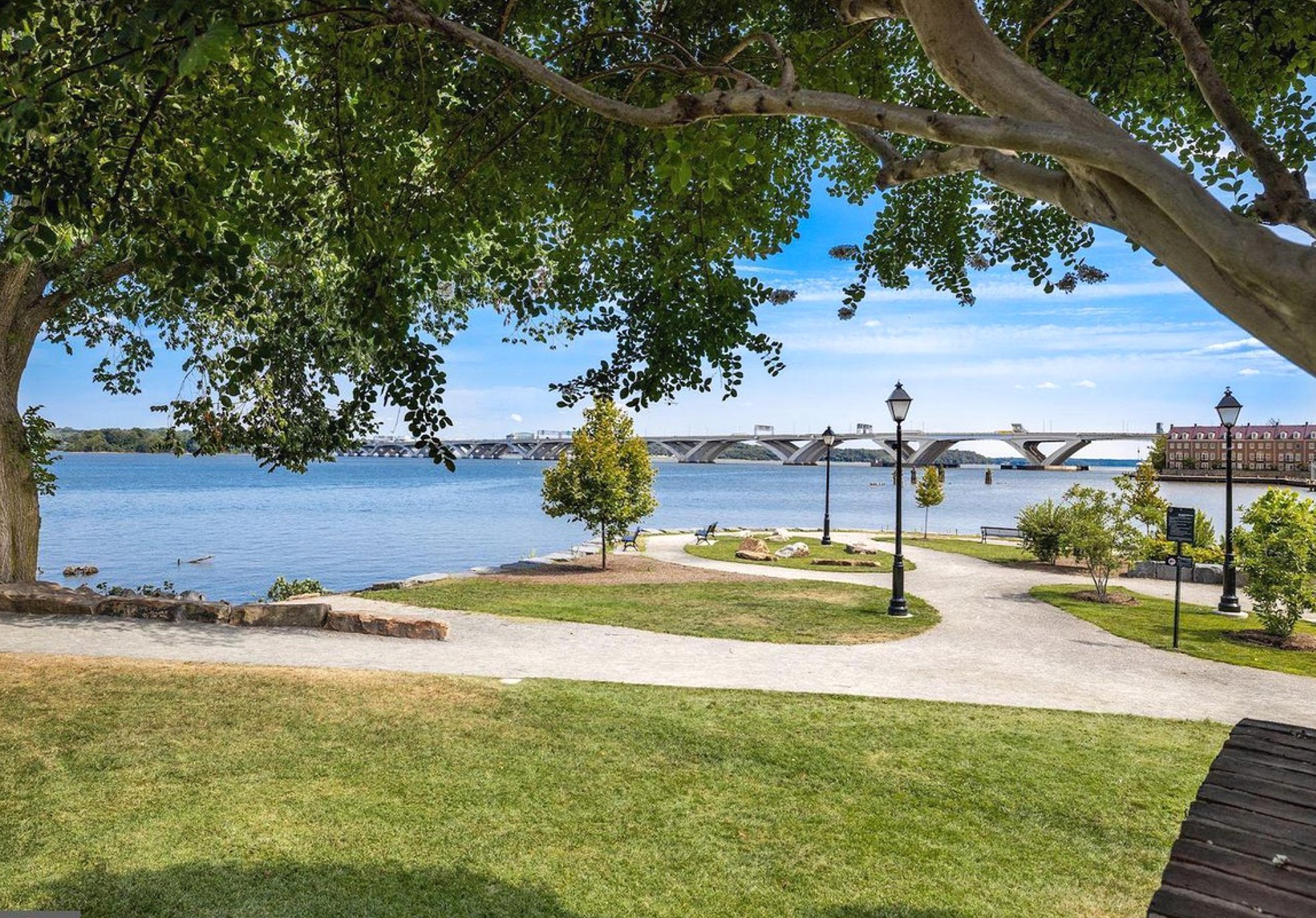
Woodrow Wilson Bridge
Washington, DC

The Woodrow Wilson Bridge carries Interstate 95 and the Capital Beltway across the Potomac River just south of Washington, DC. Increasing traffic required the construction of a new 12 lane bridge with passage for ocean-going ships. Because the bridge is considered part of the city’s monumental core, and thus subject to review by the Commission on Fine Arts, the design was selected by an international design competition.
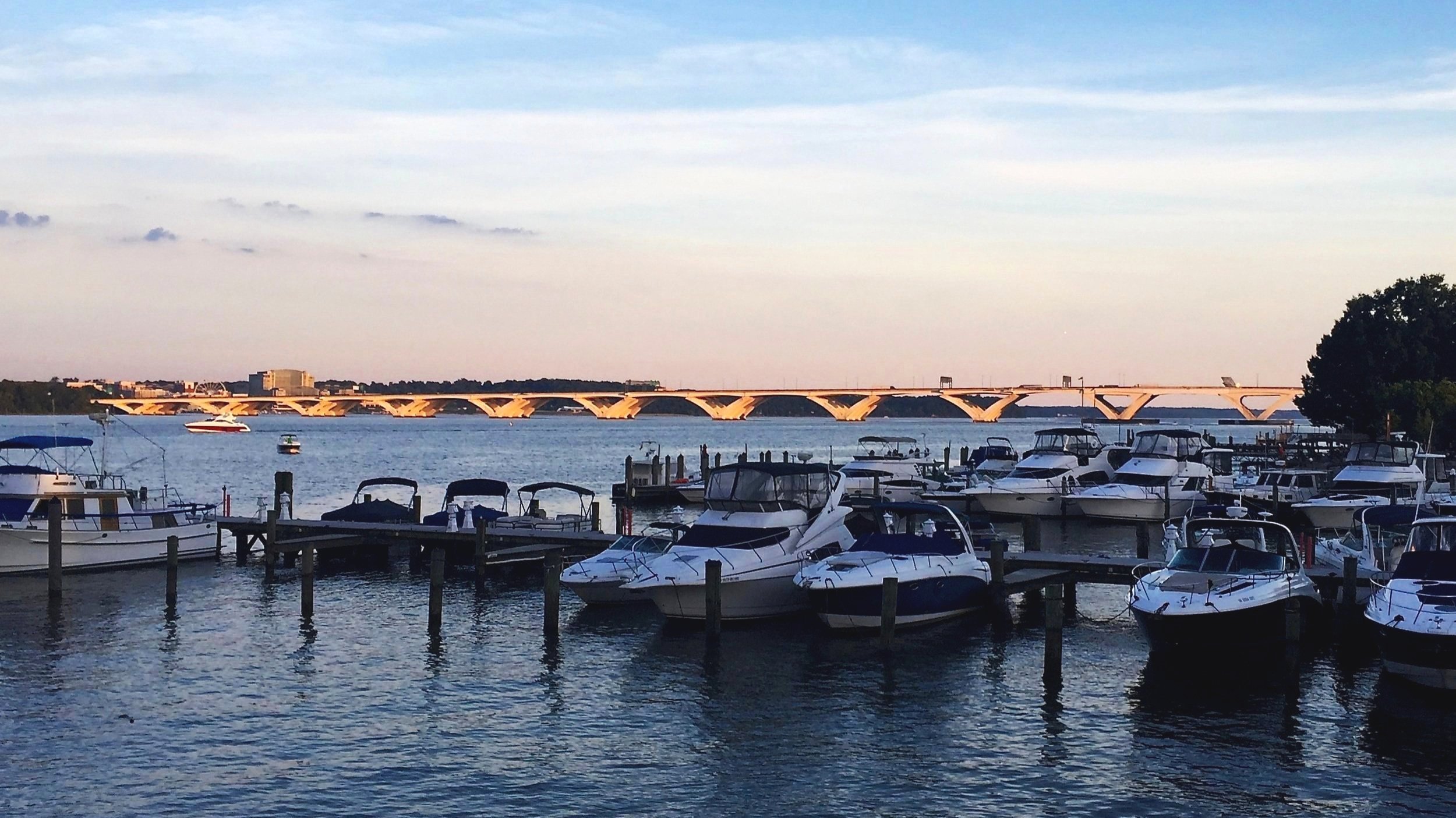
The competition required a bridge with an arch-like appearance, patterned after the Memorial Bridge at Arlington Cemetery and Washington’s other monumental bridges. The winning design is based on a V- shaped pier. The arms of the V’s are slightly curved and connected at their tips by a tension tie concealed between the girders. The piers carry continuous steel girders with curved bottom edges that continue the arched lines initiated by the piers. The bridge resembles a traditional arch bridge but avoids the horizontal forces arches would exert on the site’s poor soils.

The bridge includes a 260’ movable span at the navigation channel. The piers of this span are similar to the other V-piers, giving the bridge a seamless unity.
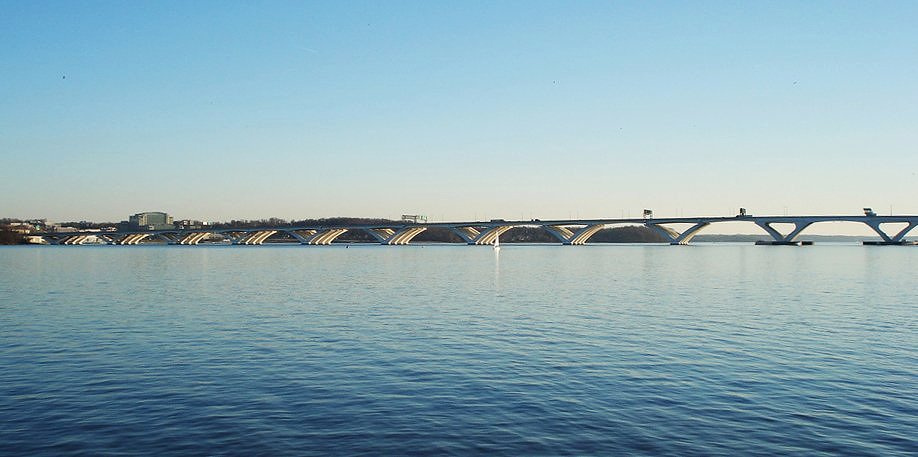
The piers allow unusually long spans (300’+) and fewer piers, opening up view corridors through the bridge from every direction. The result is that this very wide bridge (12 lanes + pedestrian/bike path) is transparent, revealing the landscape beyond.
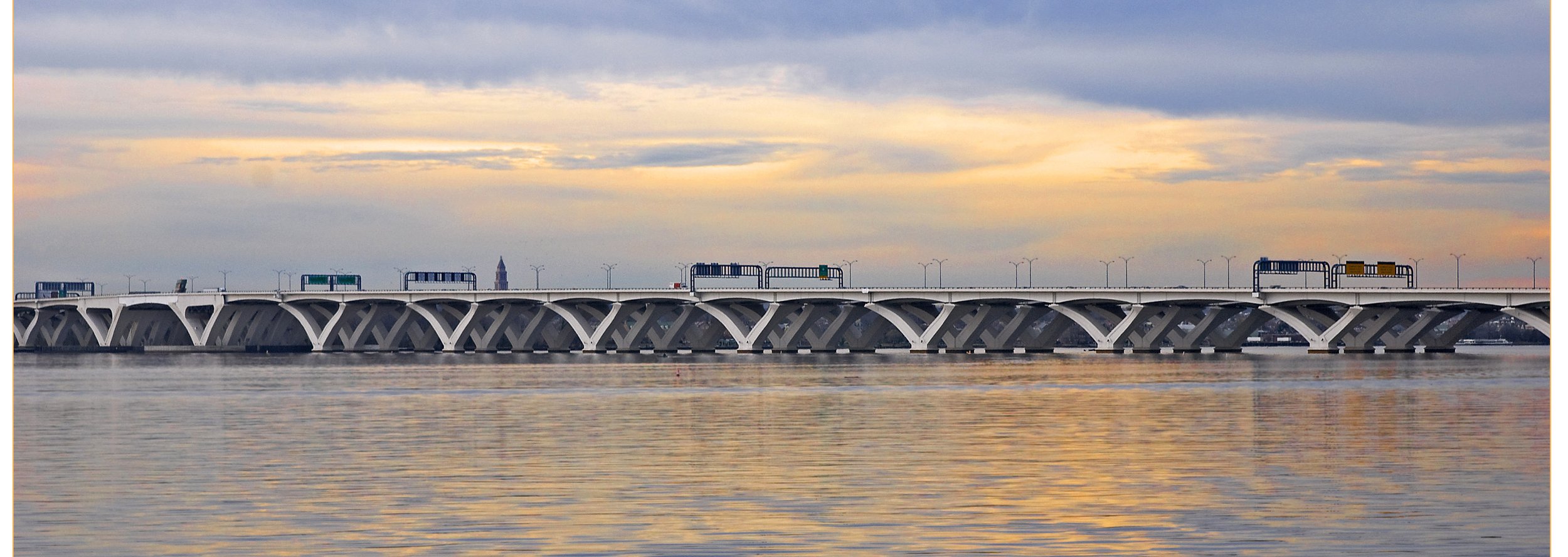
“…the piers are like the hands of Neptune reaching upward from below to support the bridge.”
The concept was enthusiastically endorsed by the competition jury and the Washington DC community.
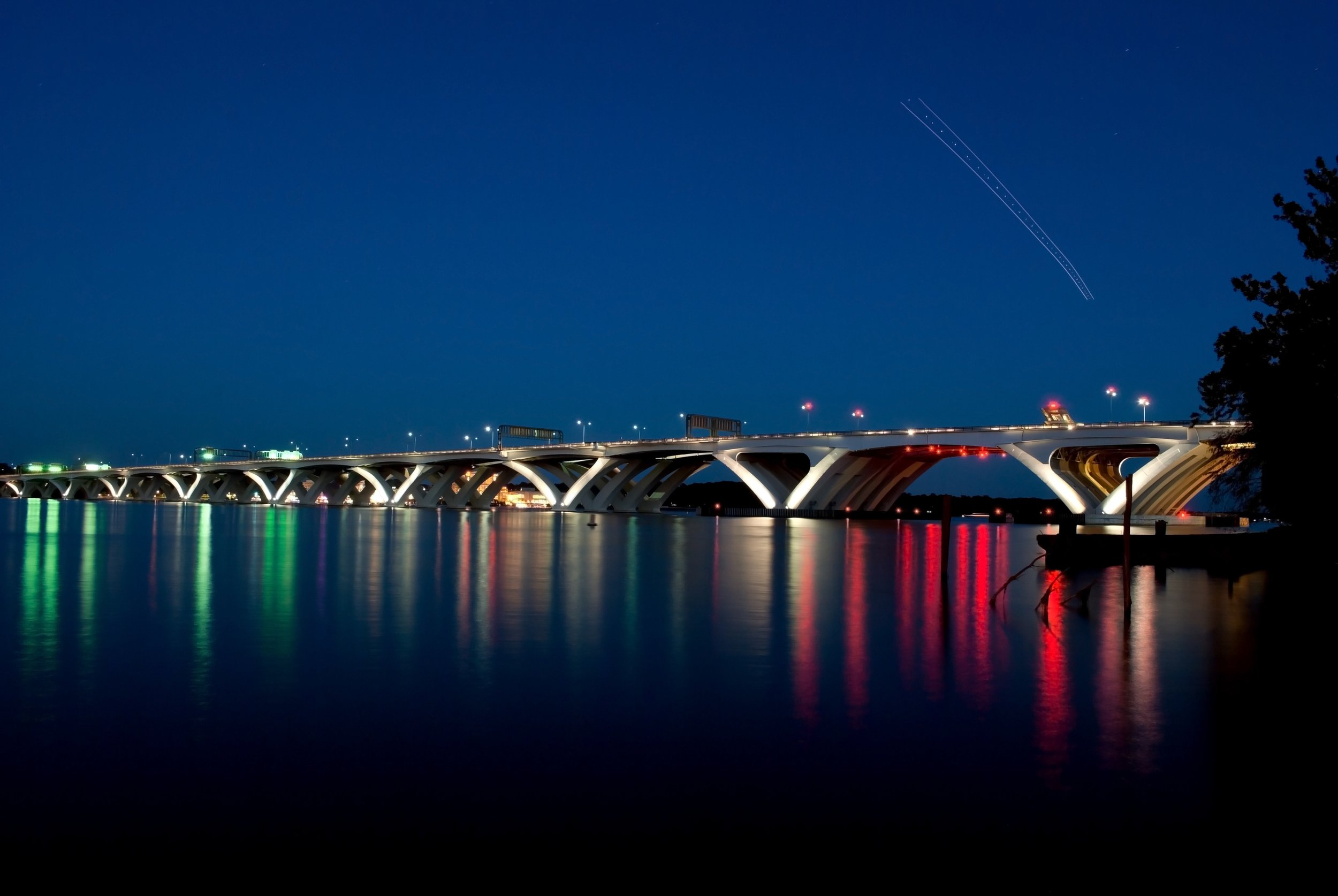
At night the V- piers are lit from their bases, illuminating their curved shapes. Reflections from the navigation lights and the signs add to the nighttime interest, as do the tracks of landing lights overhead from planes destined for Reagan National Airport.
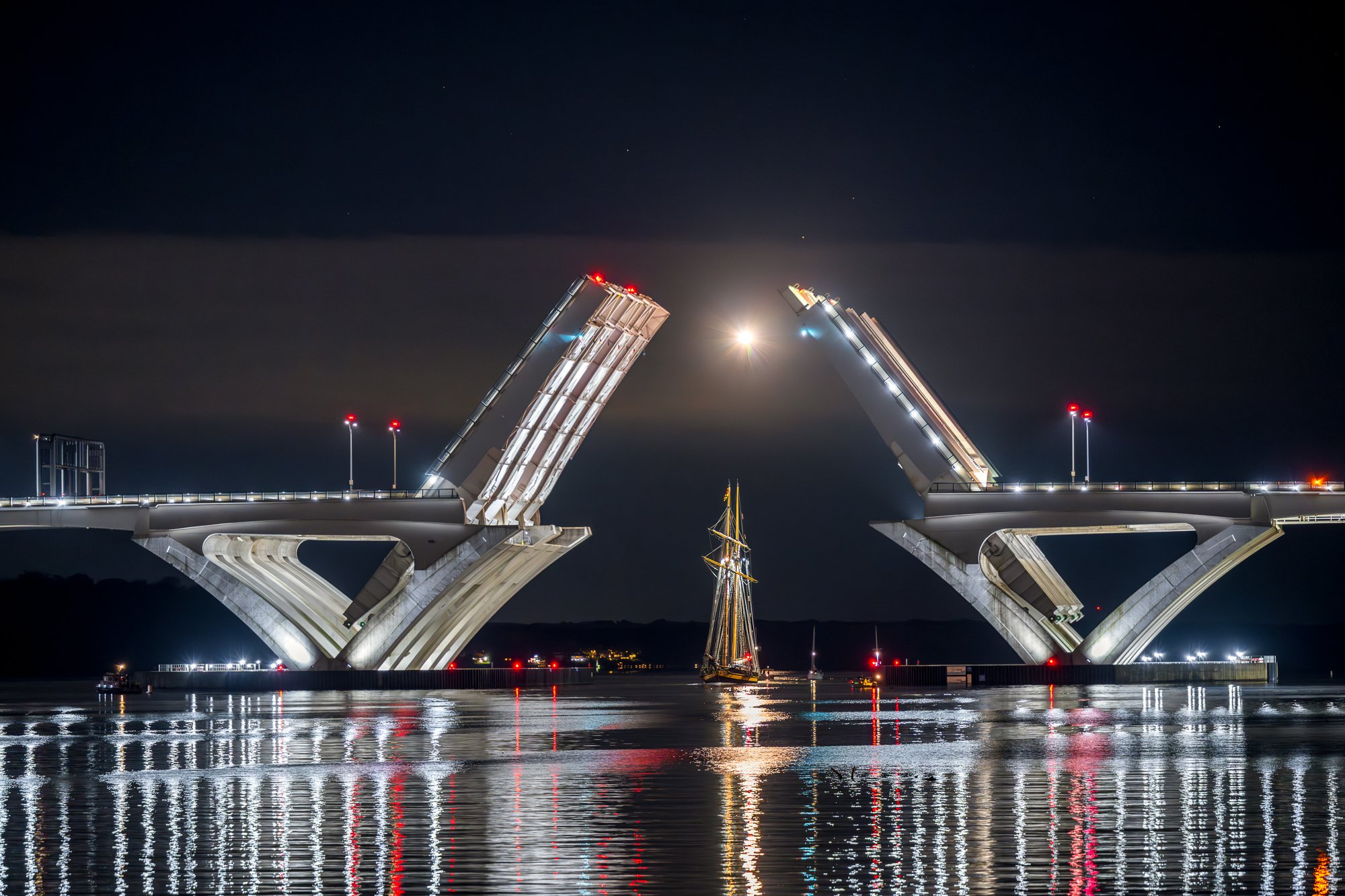
About once a month the bascule span opens late in the evening to clear the occasional tall ships, cruise ships and mega-yachts that call at Alexandria. The opening usually draws a crowd to the waterfront. Here the Pride of Baltimore arrives, while a flight to Reagan National passes overhead.
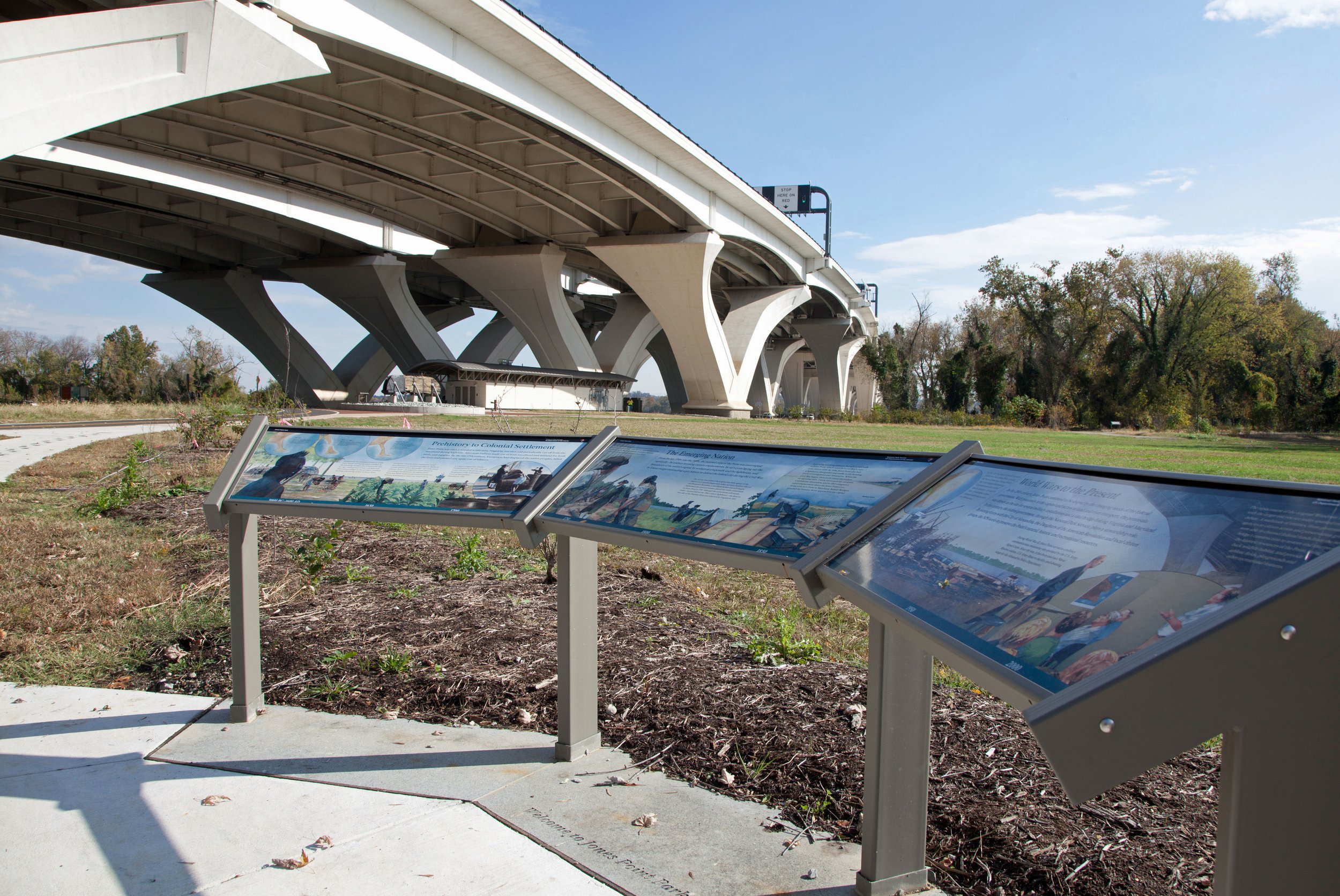
“…the piers are indeed structural marvels rivaling the leaning columns of Eero Saarinen’s Dulles International Airport.”
The V-piers long spans allow the preservation of the historic features of Jones Point Park, site of a colonial Potomac River lighthouse and a WW1 shipyard. The bridge also provides sheltered recreational opportunities as well as a route for the pedestrian/bicycle trail to Mt. Vernon.
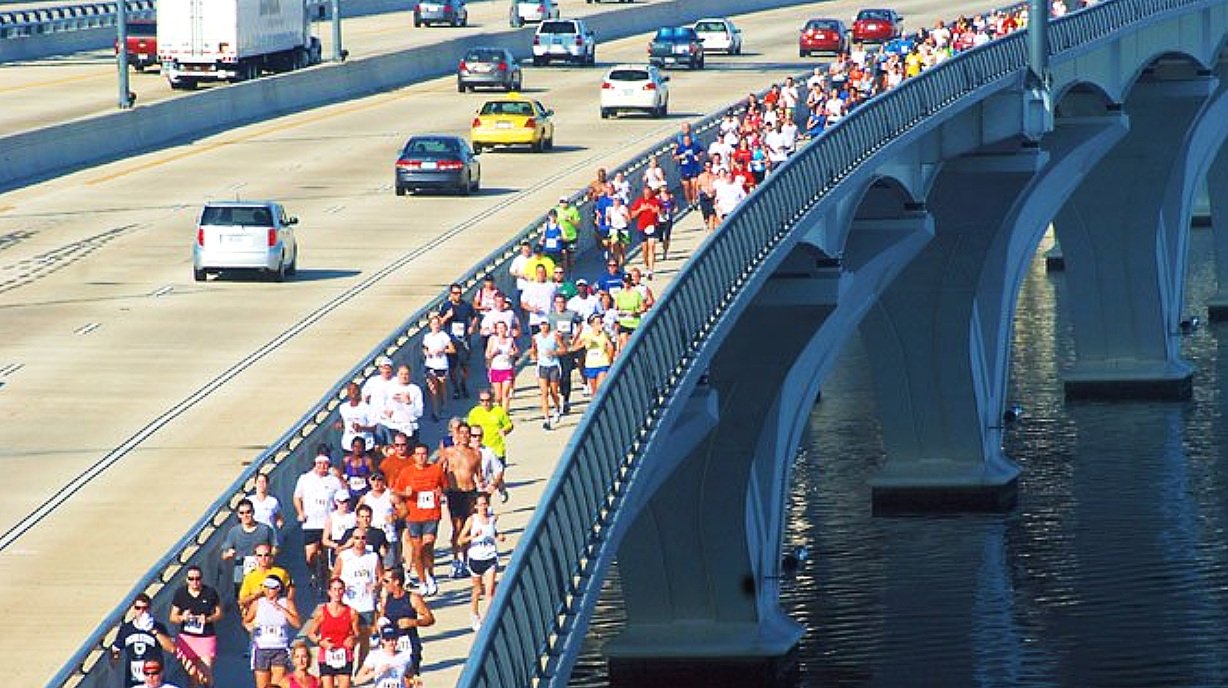
The bridge includes a 14 foot wide trail, creating for the first time pedestrian/bicycle access between Alexandria VA and Prince Georges County, MD. The trail is busy at all times of the day and night with hikers, bikers and mothers with strollers. Occasionally a local 5K race is routed across.

The bridge has catalyzed development on the Maryland shore (opposite). The National Harbor, a convention, business and residential center, and an MGM Casino have brought a new level of economic activity to Prince Georges County.
